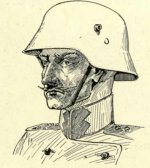odraodez
New member
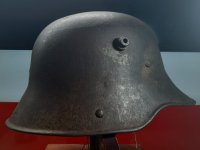
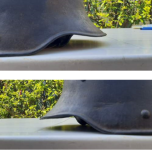
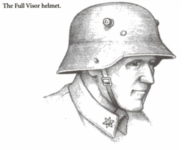
I acquired this helmet approximately five years ago through Stevanin, a reputable Italian militaria seller. Thanks to research online and to Floyd Tubbs and Robert Clawson’s book Stahlhelm, I learned that it is not a standard production piece, but rather a prototype manufactured in extremely limited numbers, that resembles a normal m16 except for the visor, which has a gentler curve compared to the normal m16 [probably, as a lot of collectors and experts think, to make wearing gas masks more comfortable].
I then created a thread on Warrelics regarding this helmet and also received some useful input via Instagram. Thanks to that, I was able to trace and consolidate some information.
For those interested in a more detailed breakdown, with additional references and images, I’ve compiled all findings here: full-visor helmet complete documentation - google doc . I also suggest taking a look a previus thread I made on warrelics: full-visor warrelics.eu thread
For the characteristics of my helmet: it resembles a normal m16, with all the normal features except obviously for the sloped brow; it unfortunately doesn't have a producer stamp; the liner seems to be a replica, as also stated by the seller.
Here's what I have been able to determine so far:
- According to Paolo Marzetti’s "Elmetti di tutto il mondo", this is a Model 1918 Stahlhelm featuring a visor approximately 3 centimeters longer than the standard issue. Marzetti includes a photograph of a similar helmet with a markedly sloped brow, which he attributes to a late-war experimental variant rather than an early developmental model.
- Ludwig Baer, in "The History of the German Steel Helmet, 1916–1945", confirms that a “full-visor helmet” was produced in both M16 and M18 configurations. This suggests the piece is not an early prototype, but a late-war experimental variant likely intended to improve frontal protection in trench warfare.
- Floyd Tubbs and Robert Clawson, in "Stahlhelm: Evolution of the German Steel Helmet", describe a helmet variant known as the “full visor helmet” produced and issued during the war. Structurally identical to the M16, it differed in that the visor flared out much higher from the dome—almost as dramatically as the neck guard. While the forward projection remained unchanged, the space above the forehead was extended. This design may have been intended to improve gas mask compatibility or ballistic deflection. At the time, officials reportedly anticipated that this “new helmet” would eventually replace the standard M16. However, it disappeared as quickly as it emerged. Due to its short production run, this variant has become extremely rare, and reliable data on its manufacturing and distribution remain scarce.
- Several militaria forums have discussed similar helmets and some were actually on sale, including examples repainted in battleship grey and retrofitted with M40 liners, sometimes attributed to Kriegsmarine use. Other discussions reference Austrian Kaiserjäger units wearing experimental German Stahlhelme with full visors and sloped brows, suggesting either cross-service adoption or late-war field testing.
To summarize:
- Marzetti identifies the helmet as an M1918 variant with an extended visor, likely an experimental model produced late in the war.
- Baer confirms the existence of full-visor models in both M16 and M18 versions as part of limited late-war trials.
- Tubbs and Clawson provide further detail on the structural features and wartime issuance of the full-visor helmet, noting its short-lived production and rarity.
I would also like to add that most images of this helmet associate it with the Austro-Hungarian army rather than Germany, suggesting that after German trials it may have been sent as aid to Austria - who struggled to produce Stahlhelms - in time for the Twelfth Battle of the Isonzo. It might have been worn by Austrians or by German troops supporting them and then left behind. The fact that it was sold by an Italian dealer specializing in Italian and Austro-Hungarian World War I militaria lends credence to this theory.
I would greatly appreciate any further documentation, period photographs, production data, factory records, or field reports related to these helmets—particularly concerning their manufacture, issuance, or deployment. Any additional leads or insights would be highly valuable. Please feel free to comment here or contact me directly via Reddit at u/Odraodez or on Instagram at _odraodez_mmiv_.
I would greatly appreciate any further documentation, period photographs, production data, factory records, or field reports related to these helmets—particularly concerning their manufacture, issuance, or deployment. Any additional leads or insights would be highly valuable. Please feel free to comment here or contact me directly via Reddit at u/Odraodez or on Instagram at _odraodez_mmiv_.
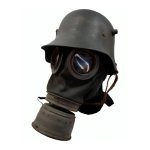
Addendum: Thanks to u/lunageek520 I was able to find Bashford Dean’s “Helmets and Body Armor in Modern Warfare” which also corroborates the theory that the full visor helmet was actually a late war experiment. Interestingly, in the photo an Austrian soldier is depicted and the helmet seems to be in the m17/m18 berndorfer configuration, with the chinstrap rivets much higher up.
Last edited:

